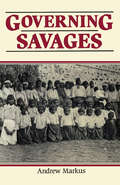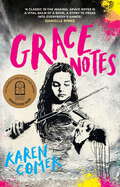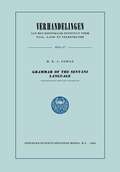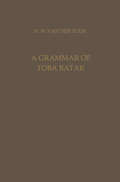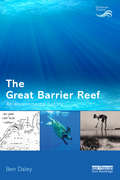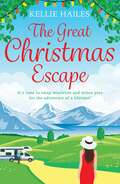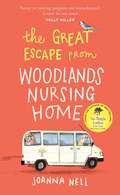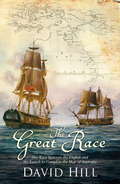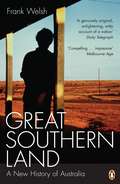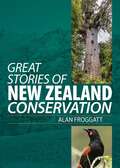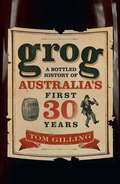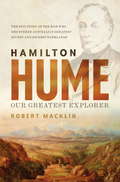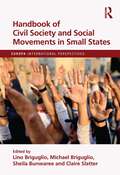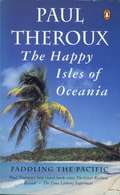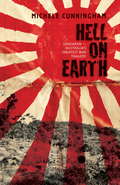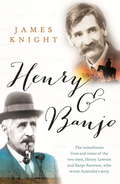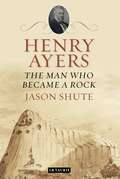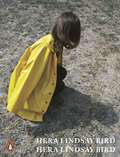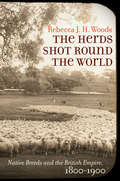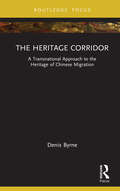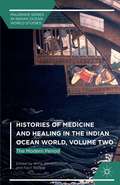- Table View
- List View
Governing Savages: Commonwealth And Aboriginies, 1911-39
by Andrew MarkusIn 1928, after a white man was killed, a punitive party mounted a series of attacks on Aborigines northwest of Alice Springs. The party's leader admitted that 31 Aborigines were killed. One missionary in the area put the toll at 70; another at as many as 100.Since 1911, the administration of the Northern Territory had been the direct responsibility of the Commonwealth. In placing this event and others within the context of policies pursued by the national government, Governing Savages reveals how policies of brutality and calculated neglect bequeathed a bitter legacy to subsequent generations.
Governing Savages
by Andrew MarkusIn 1928, after a white man was killed, a punitive party mounted a series of attacks on Aborigines northwest of Alice Springs. The party's leader admitted that 31 Aborigines were killed. One missionary in the area put the toll at 70; another at as many as 100.Since 1911, the administration of the Northern Territory had been the direct responsibility of the Commonwealth. In placing this event and others within the context of policies pursued by the national government, Governing Savages reveals how policies of brutality and calculated neglect bequeathed a bitter legacy to subsequent generations.
Grace Notes
by Karen ComerThis song has a grace note,a tiny note that's there for embellishmentbut can easily be ignored,not played.Tonight, I add it in -just because.We can all do with an extra noteof grace.Grace Dalfinch is a talented violinist who longs to play contemporary music in bars, but her mum forbids her. James Crux is an aspiring street artist who promised his dad he wouldn't paint in public until he's finished school. When Crux witnesses Grace's impromptu performance on a deserted tram, he's inspired to paint her and her violin; and when Grace stumbles across her portrait in a Melbourne alley by an anonymous street artist, she sets out to find its creator.Grace Notes is a debut YA verse novel, set in one of the most locked-down cities in the world - Melbourne, 2020. For fans of Cath Crowley and Pip Harry.'A classic in the making; Grace Notes is a vital balm of a book, a story to press into everybody's hands.'DANIELLE BINKS'Poetry, music and art, woven together in an uplifting story about endless lockdowns and first love.'NOVA WEETMAN'Comer captures the beats of Melbourne's 2020 and the unique experience of a generation of teens in one of the most locked-down cities in the world.'Books+Publishing'Heart and soul triumph over Covid lockdowns and restrictions . . . Karen has used the verse novel to beguile, dance and demand layers of emotion and depth that only poetry can sustain. A masterful debut!'LORRAINE MARWOOD'Like the grace note of the title, this beautiful story strikes the perfect tone, mixing colour, light and music at a time when we needed it most.'NICOLE HAYES
Grammar of the Sentani Language (Verhandelingen van het Koninklijk Instituut voor Taal-, Land- en Volkenkunde #47)
by Hendrik Karel CowanA Grammar of Toba Batak (Verhandelingen van het Koninklijk Instituut voor Taal-, Land- en Volkenkunde)
by Herman Neubronner van der TuukThe Great Barrier Reef: An Environmental History (Earthscan Oceans)
by Ben DaleyThe Great Barrier Reef is located along the coast of Queensland in north-east Australia and is the world's largest coral reef ecosystem. Designated a World Heritage Area, it has been subject to increasing pressures from tourism, fishing, pollution and climate change, and is now protected as a marine park. This book provides an original account of the environmental history of the Great Barrier Reef, based on extensive archival and oral history research. It documents and explains the main human impacts on the Great Barrier Reef since European settlement in the region, focusing particularly on the century from 1860 to 1960 which has not previously been fully documented, yet which was a period of unprecedented exploitation of the ecosystem and its resources. The book describes the main changes in coral reefs, islands and marine wildlife that resulted from those impacts. In more recent decades, human impacts on the Great Barrier Reef have spread, accelerated and intensified, with implications for current management and conservation practices. There is now better scientific understanding of the threats faced by the ecosystem. Yet these modern challenges occur against a background of historical levels of exploitation that is little-known, and that has reduced the ecosystem's resilience. The author provides a compelling narrative of how one of the world's most iconic and vulnerable ecosystems has been exploited and degraded, but also how some early conservation practices emerged.
The Great Barrier Reef: An Environmental History (Earthscan Oceans)
by Ben DaleyThe Great Barrier Reef is located along the coast of Queensland in north-east Australia and is the world's largest coral reef ecosystem. Designated a World Heritage Area, it has been subject to increasing pressures from tourism, fishing, pollution and climate change, and is now protected as a marine park. This book provides an original account of the environmental history of the Great Barrier Reef, based on extensive archival and oral history research. It documents and explains the main human impacts on the Great Barrier Reef since European settlement in the region, focusing particularly on the century from 1860 to 1960 which has not previously been fully documented, yet which was a period of unprecedented exploitation of the ecosystem and its resources. The book describes the main changes in coral reefs, islands and marine wildlife that resulted from those impacts. In more recent decades, human impacts on the Great Barrier Reef have spread, accelerated and intensified, with implications for current management and conservation practices. There is now better scientific understanding of the threats faced by the ecosystem. Yet these modern challenges occur against a background of historical levels of exploitation that is little-known, and that has reduced the ecosystem's resilience. The author provides a compelling narrative of how one of the world's most iconic and vulnerable ecosystems has been exploited and degraded, but also how some early conservation practices emerged.
The Great Christmas Escape
by Kellie HailesIt's time to swap mistletoe and mince pies for the adventure of a lifetime! Sara's life has been in a bit of a rut. Lately, her job as a photographer has just meant taking photos of happy couples and families all day before returning to her empty flat. And while she normally loves Christmas with her family, this year a part of her just wants to run away. So when her ex-husband Fin gets in touch with a wild idea - a joint work trip to New Zealand - she knows it's crazy... but she says yes!A celebrated travel blogger, Fin has made a career out of following his bliss. As much as he loves Sara, the steady family life she's always wanted is not one he can give her. This trip together is his one chance to win her back. But can he convert her to his impulsive lifestyle? There's only one way to find out. As the two explore the stunning sights and thrills of New Zealand, they're about to discover there's so much more to each other than they ever realised...A Christmas romcom like no other, The Great Christmas Escape by Kellie Hailes is the perfect getaway read this year...
The Great Escape from Woodlands Nursing Home: Another gorgeously uplifting novel from the author of the bestselling THE SINGLE LADIES OF JACARANDA RETIREMENT VILLAGE
by Joanna NellAt nearly ninety, retired nature writer Hattie Bloom prefers the company of birds to people, but when a fall lands her in a nursing home she struggles to cope with the loss of independence and privacy. From the confines of her 'room with a view' - of the car park! - she dreams of escape.Fellow 'inmate', the gregarious, would-be comedian Walter Clements also plans on returning home as soon as he is fit and able to take charge of his mobility scooter.When Hattie and Walter officially meet at The Night Owls, a clandestine club run by Sister Bronwyn and her dog, Queenie, they seem at odds. But when Sister Bronwyn is dismissed over her unconventional approach to aged care, they must join forces - and very slowly, an unlikely, unexpected friendship begins to grow.Full of wisdom and warmth, The Great Escape from Woodlands Nursing Home is a gorgeously poignant, hilarious story showing that it is never too late to laugh - or to love. Perfect for fans of Richard Osman's THE THURSDAY MURDER CLUB!Praise for Joanna Nell:'Hugely entertaining . . . funny and heart-warming' Woman & Home'A gentle, warm-hearted book that had me rooting for all the characters and laughing out loud at points' LIBBY PAGE, author of The Lido'A warm and touching story with a cast of characters who became my friends' - Katie Marsh, author of THE REST OF ME'The perfect blend of funny and moving' - Natasha Lester, author of THE PARIS SEAMSTRESS'A funny and poignant exploration of growing old disgracefully and enjoying your twilight years.' - Culturefly
The Great Race: The Race Between the English and the French to Complete the Map of Australia
by David HillOn the afternoon of 8 April 1802, in the remote southern ocean, two explorers had a remarkable chance encounter. Englishman Matthew Flinders and Frenchman Nicolas Baudin had been sent by their governments on the same quest: to explore the uncharted coast of the great south land and find out whether the west and east coasts, four thousand kilometres apart, were part of the same island. And so began the race to compile the definitive map of Australia. These men's journeys were the culmination of two hundred years of exploration of the region by the Dutch - most famously Abel Tasman - the Portuguese, the Spanish and by Englishmen such as the colourful pirate William Dampier and, of course, James Cook. The three-year voyages of Baudin and Flinders would see them endure terrible hardships in the spirit of discovery. They suffered scurvy and heat exhaustion, and Flinders was shipwrecked and imprisoned - always knowing he was competing with the French to produce the first map of this mysterious continent. Written from diaries and other first-hand accounts, this is the thrilling story of men whose drawings recorded countless previously unknown species and turned mythical creatures into real ones, and whose skill and determination enabled Terra Australis Incognita to become Australia.
Great Southern Land: A New History of Australia
by Frank WelshAustralia is a dynamic multi-cultural society, viewed by many as the world's most desirable place to live. Here Frank Welsh traces Australia's intriguing and varied history to examine how this society emerged, from its ancient Aborigine tribes and earliest British convict settlements to today's modern nation - one that retains strong links with its colonial past but is increasingly independent and diverse. While full of admiration for Australia, Welsh also exposes national myths and confronts the darker side of its history - oppression of the Aboriginal peoples and the 'White Australia' policy - and places the country in a global context, considering the changing relationship with Britain and its Asian neighbours, as well as more recent alliances with the US.Original, provocative and entertaining, Great Southern Land provides the most comprehensive one-volume history of this endlessly fascinating nation.
Grog: A Bottled History of Australia's First 30 Years
by Tom GillingThe story of grog is the story of Australia. This is how it all began.Even before James Squire set sail as a convict aboard the First Fleet, liquor was playing its part in shaping the colony-to-be. Who was entitled to it and who wasn't; who could make and sell it and who couldn't; and how the young and thirsty colony could make itself self-sufficient in booze. As the colony grew, rum became both a currency and a source of political strength and instability, culminating in the Rum Rebellion in 1808, and what one observer said was a society of 'drunkenness, gaming and debaucheries'.Now, with Grog, writer Tom Gilling presents a compelling bottled history of the first three decades of European settlement: how the men and women of New South Wales transformed the colony from a squalid and starving convict settlement into a prosperous trading town with fashionable Georgian street names and a monumental two-storey hospital built by private contractors in exchange for a monopoly on rum.Grog is a colourful account of the unique beginnings of a new nation, and a unique insight into the history of Australia's long love affair with the hard stuff.
Hamilton Hume: Our Greatest Explorer
by Robert MacklinThe untold story of Hamilton Hume - the Australian-born explorer who truly opened up the nation.While English-born soldiers, sailors and surveyors have claimed pride of place among the explorers of the young New South Wales colony, the real pathfinder was a genuine native-born Australian. Hamilton Hume, a man with a profound understanding of the Aboriginal people and an almost mystical relationship with the Australian bush, led settlers from the cramped surrounds of Sydney Town to the vast fertile country that would provide the wealth to found and sustain a new nation.Robert Macklin, author of the critically acclaimed Dark Paradise, tells the heroic tale of this young Australian man who outdid his English 'betters' by crossing the Blue Mountains, finding a land route from Sydney to Port Phillip and opening up western New South Wales. His contribution to the development of the colony was immense but downplayed in deference to explorers of British origin. Hamilton Hume uncovers this brave man's achievements and paints an intriguing and at times shocking portrait of colonial life, by the author of the bestselling SAS Sniper.
Handbook of Civil Society and Social Movements in Small States (Europa International Perspectives)
by Lino Briguglio Claire Slatter Michael Briguglio Sheila BunwareeThis volume is unique because of its focus on small states. There are many studies on civil society and social movements, but none that specifically deal with this category of countries. As is well known, small states have particular characteristics, including a limited ability to reap the benefits of economies of scale, a high degree of exposure to forces outside their control, and the proximity of politicians to the voters, often leading to clientelistic relationships and patronage networks. The small island developing states have the additional problem of high environmental vulnerability, with some also dealing with disproportionate ecological footprints. These factors have a bearing on the organization and performance of civil society organizations and social movements, as explained in several chapters of this book. The volume is organized in three parts, dealing with aspects of civil society and social moments in small states in the political, social and environmental spheres, respectively. Various definitions of civil society are proposed in the chapters, but most authors associate the term with organized groups, operating in the interest of citizens, independently of government and commercial business, including various forms of non-governmental organizations (NGOs). Civil society also encompasses social movements, which are considered to be loosely organized collective campaigns in pursuit of social goals. These two terms are sometimes used interchangeably; however, some authors argue that social movements tend to engage in ‘contentious politics’ including protests, while NGOs engage through more organized and institutional routes.
Handbook of Civil Society and Social Movements in Small States (Europa International Perspectives)
by Lino Briguglio Claire Slatter Michael Briguglio Sheila BunwareeThis volume is unique because of its focus on small states. There are many studies on civil society and social movements, but none that specifically deal with this category of countries. As is well known, small states have particular characteristics, including a limited ability to reap the benefits of economies of scale, a high degree of exposure to forces outside their control, and the proximity of politicians to the voters, often leading to clientelistic relationships and patronage networks. The small island developing states have the additional problem of high environmental vulnerability, with some also dealing with disproportionate ecological footprints. These factors have a bearing on the organization and performance of civil society organizations and social movements, as explained in several chapters of this book. The volume is organized in three parts, dealing with aspects of civil society and social moments in small states in the political, social and environmental spheres, respectively. Various definitions of civil society are proposed in the chapters, but most authors associate the term with organized groups, operating in the interest of citizens, independently of government and commercial business, including various forms of non-governmental organizations (NGOs). Civil society also encompasses social movements, which are considered to be loosely organized collective campaigns in pursuit of social goals. These two terms are sometimes used interchangeably; however, some authors argue that social movements tend to engage in ‘contentious politics’ including protests, while NGOs engage through more organized and institutional routes.
The Happy Isles of Oceania: Paddling the Pacific
by Paul TherouxPaul Theroux invites us to join him on one of his most exotic and tantalizing adventures exploring the coasts and blue lagoons of the Pacific Islands, and taking up residence to discover the secrets of these isles.Theroux is a mesmerizing narrator – brilliant, witty, keenly perceptive as he floats through Gauguin landscapes, sails in the wake of Captain Cook and recalls the bewitching tales of Jack London and Robert Louis Stevenson. Alone in his kayak, paddling to seldom visited shores, he glides through time and space, discovering a world of islands, their remarkable people, and in turn, happiness.‘A sharp, fascinating and highly entertaining book … Theroux at his best’ Daily Telegraph.
Hell on Earth: Sandakan - Australia's greatest war tragedy
by Michele CunninghamThe heart-rending story of the Australians brutally imprisoned in Sandakan, the Japanese POW camp in North Borneo, whose very name came to symbolise cruelty and ill-treatment.In mid-1942, after the fall of Singapore, almost three thousand Allied prisoners of war were taken by the Japanese from Changi to Sandakan. Of those, 2500 lost their lives.Men died at Sandakan and on the infamous death marches: they died from sickness and starvation, torture and appalling violence, or were killed by the guards as they were forced to keep moving along a seemingly never-ending track. Only six Australians survived the death marches, out of the thousand who left ...Michele Cunningham's father was one of those who survived Sandakan, and then Kuching. Through the mateship and common bond of the survivors, she has had access to their stories, and here she gives an account of these courageous men – those who refused to break no matter how badly they were treated; and those brave men who didn't make it. And it is the story of the depths to which the Japanese sank.Hell on Earth is a remarkable story of bravery, brutality, mateship and survival.
Henry and Banjo: The Tumultuous Lives And Times Of Henry Lawson And Banjo Paterson, The Men Who Wrote Australia's History
by James KnightThe fascinating lives and turbulent times of Henry Lawson and Andrew 'Banjo' Paterson - the two men who wrote Australia's story.Today most of us know that Henry Lawson and Andrew 'Banjo' Paterson were famous writers. We know about Matilda, Clancy of the Overflow and the Man from Snowy River; The Drover's Wife, While the Billy Boils and Joe Wilson and his mates, but little else. Here, in a compelling and engaging work, James Knight brings Henry and Banjo's own stories to life. And there is much to tell.Both were country born, just three years and three hundred kilometres apart, Henry on the goldfields of Grenfell and Banjo on a property near Orange, but their paths to literary immortality took very different routes - indeed at times their lives were ones of savage and all too tragic contrasts. Banjo, born into a life of comparative privilege, would rise from country boy to Sydney Grammar student, solicitor, journalist, war correspondent and revered man about town. Henry's formal education only began when his feminist mother finally won her battle for a local school but illness and subsequent deafness would make continuing his lessons difficult, seeing him find work as a labourer, a coach painter and a journalist, all the while wrestling with poverty, alcoholism and mental illness. Both men would become household names during their lifetimes. Both would have regrets.Henry and Banjo details two incredibly fascinating lives and delves into the famous (and not so famous) writings of the two men who had the power to influence and change Australia.
Henry Ayers: The Man Who Became a Rock
by Jason Shute'The most wonderful natural feature I have ever seen.' With these words William Gosse expressed the awe he and many others have felt at the natural phenomenon of Uluru. The first white person to reach the central Australian monolith, he gave it the name Ayers Rock. But who was Henry Ayers, the man whose name is forever associated with Australia's most recognisable natural icon? What did he do to deserve this accolade? And why should historians of Australia and the Empire still remember him today?Although the Rock's ancient indigenous name, Uluru, has now been restored, in place of the nineteenth-century version, the name of Ayers is still recognisable well over a century after the Rock's 'discovery' in 1873. Indeed, the rock that bore his name is one of the most famous natural wonders on earth and attracts over 400,000 visitors every year. This book - the first biography of Henry Ayers - focuses attention on the man behind the name and examines all aspects of his life - as a migrant from the naval town of Portsmouth in southern England, miner, businessman and politician - both public and private. Henry Ayers was a complex character who played an integral and leading role in the development of the then British Province of South Australia. Despite landing amidst the colony's first depression, Ayers went on to win the Secretaryship of the South Australian Mining Association in 1845 and forged a successful career based on the wealth of the 'Monster' copper mine at Burra Burra, north of Adelaide. Jason Shute describes how Ayers made his way from humble origins to South Australia's parliament and ultimately achieved the highest elected office of the South Australian polity, as its Premier, no fewer than seven times. Shute also illuminates Ayers' personal life: his relationships with his wife and children; his tempestuous friendship and rivalry with Henry Rymill, a relative of the wealthiest shareholder in the Burra Burra mine; and his defining connection with William Gosse, the explorer and surveyor, who esteemed him so highly that he honoured him with the connection for which he is remembered internationally.This biography places the life of this prominent Australian figure in the context of Australia's colonial history and charts the development of the province of South Australia. It offers a vivid portrait of a man who was consistently in the upper echelons of influence and authority in southern Australia and whose legacy lives on in the name of one of the most famous and recognisable wonders of the world.
Hera Lindsay Bird
by Hera Lindsay BirdNew Zealand's best-selling poetry collection, from the mysterious force behind such classics as 'Monica' (as in, the one from Friends) and 'Keats is Dead so F**k Me from Behind'this impressive debut has established Hera Lindsay Bird as a good girl......with many beneficial thoughts and feelings......with themes as varied as snow and tears, the poems in this collection shine with the fantastic cream of who she is................juxtaposing many classical and modern breezesBird turns her prescient eye on love and loss, and what emerges is like a helicopter in fog......or a bejewelled Christmas sleigh, gliding triumphantly through the contemporary aesthetic desert.........this is at once an intelligent and compelling fantasy of tenderness......heart-breaking and charged with trees......without once sacrificing the forest............whether you are masturbating luxuriously in your parents' sleepout....................or pushing a pork roast home in a vintage pram...................this is the book for you.............................................heroically and compulsively stupid.............................................................................................................................whipping you once again into medieval sunlight.PRAISE FOR HERA LINDSAY BIRD'I think there's a pretty strong case which suggests Hera Lindsay Bird is like the most exciting newish poet in NZ' - Steve Braunias'On more than one occasion, while working through a poem, I have found myself asking, what would Hera Lindsay Bird do?' - Bill Manhire'Hi, dear, we have to say how much we enjoyed, if right word, the Hate poem. Really made us think, loved the line about the ancient cannon' - Text message from Ashleigh Young's mum'The wickedest problem in Hera Lindsay Bird is not sex but taste' - John Newton
The Herds Shot Round the World: Native Breeds and the British Empire, 1800–1900 (Flows, Migrations, and Exchanges)
by Rebecca J. WoodsAs Britain industrialized in the early nineteenth century, animal breeders faced the need to convert livestock into products while maintaining the distinctive character of their breeds. Thus they transformed cattle and sheep adapted to regional environments into bulky, quick-fattening beasts. Exploring the environmental and economic ramifications of imperial expansion on colonial environments and production practices, Rebecca J. H. Woods traces how global physiological and ecological diversity eroded under the technological, economic, and cultural system that grew up around the production of livestock by the British Empire. Attending to the relationship between type and place and what it means to call a particular breed of livestock "native," Woods highlights the inherent tension between consumer expectations in the metropole and the ecological reality at the periphery.Based on extensive archival work in the United Kingdom, New Zealand, and Australia, this study illuminates the connections between the biological consequences and the politics of imperialism. In tracing both the national origins and imperial expansion of British breeds, Woods uncovers the processes that laid the foundation for our livestock industry today.
The Heritage Corridor: A Transnational Approach to the Heritage of Chinese Migration (Routledge Research on Museums and Heritage in Asia)
by Denis ByrneThe Heritage Corridor argues for a transnational approach to investigating and recording heritage places that emerge from histories of migration. Addressing the material legacy of migration, this book also relates it to issues of contemporary importance. Presenting an image of the built environment of migration as one shaped by the ongoing flows of people, ideas, objects and money that circulate through migration corridors, Byrne proposes that houses and other structures built by migrants in their home villages in China over the period 1840–1940 should be seen as crystallisations of the labour, aspirations and longings enacted and experienced by their builders while overseas. Demonstrating that the material world of the migrant is distributed across transnational space, the book calls for an approach to the heritage of migration that is similarly expansive. It proposes and illustrates new methods and strategies for heritage practice. The Heritage Corridor is a book for scholars and students in the fields of critical heritage studies, migration studies and Chinese diasporic mobilities. It is designed to be accessible to heritage practitioners, readers with an interest in the material worlds of migration, past and present, and to all those with an interest in the ‘archaeology’ of transnational migration.
The Heritage Corridor: A Transnational Approach to the Heritage of Chinese Migration (Routledge Research on Museums and Heritage in Asia)
by Denis ByrneThe Heritage Corridor argues for a transnational approach to investigating and recording heritage places that emerge from histories of migration. Addressing the material legacy of migration, this book also relates it to issues of contemporary importance. Presenting an image of the built environment of migration as one shaped by the ongoing flows of people, ideas, objects and money that circulate through migration corridors, Byrne proposes that houses and other structures built by migrants in their home villages in China over the period 1840–1940 should be seen as crystallisations of the labour, aspirations and longings enacted and experienced by their builders while overseas. Demonstrating that the material world of the migrant is distributed across transnational space, the book calls for an approach to the heritage of migration that is similarly expansive. It proposes and illustrates new methods and strategies for heritage practice. The Heritage Corridor is a book for scholars and students in the fields of critical heritage studies, migration studies and Chinese diasporic mobilities. It is designed to be accessible to heritage practitioners, readers with an interest in the material worlds of migration, past and present, and to all those with an interest in the ‘archaeology’ of transnational migration.
Histories of Medicine and Healing in the Indian Ocean World, Volume Two: The Modern Period (Palgrave Series in Indian Ocean World Studies)
by Anna Winterbottom Facil TesfayeThe Indian Ocean has been the site of multiple interconnected medical interactions that may be viewed in the context of the environmental factors connecting the region. This interdisciplinary work presents essays on various aspects of disease, medicine, and healing in different locations in and around the Indian Ocean from the eighteenth century to the contemporary era. The essays explore theoretical explanations for disease, concepts of fertility, material culture, healing in relation to diplomacy and colonialism, public health, and the health of slaves and migrant workers. This book will appeal to academics and graduate students working in the fields of medical and scientific history, as well as in the growing fields of Indian Ocean studies and global history.
